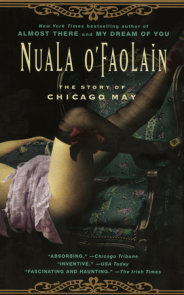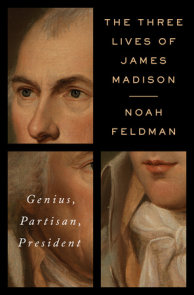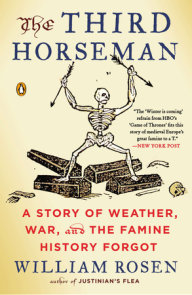READERS GUIDE
Questions and Topics for Discussion
INTRODUCTION
Midnight in Peking takes readers inside in the decadent final days of Peking before the cataclysm of Japanese occupation and World War II. It is a world of opium dens and brothels, of untouchable privilege and sexual predation, of ancient superstitions and modern anxieties. The year is 1937, the Japanese are closing in, Communists and Nationalists are skirmishing across the country, and Pekingers, both foreign and native, are on edge. Tensions rise dramatically when the mutilated body of Pamela Werner—the nineteen–year–old adopted daughter of E. T. C. Werner, a leading scholar of Chinese culture and history and a former diplomat—is found near the Fox Tower, just beyond the safety of the small enclave of foreigners known as the Legation Quarter.
With few clues and no obvious motive, her murder, and the savage dismemberment of her body, which has been hacked nearly beyond recognition and from which the heart and liver have been removed, is both shocking and mystifying. The superstitious blame the evil fox spirits. Others fear the Japanese committed the crime as a grim warning of what was to come. British authorities want to pin it on a Chinese as quickly as possible. Bringing the killer to justice is crucial for both the British and the Chinese to save face, and in a remarkable cultural collaboration, the Chinese detective Colonel Han teams up with the Scotland Yard-trained Detective Chief Inspector Richard Dennis to solve the crime.
Their investigation takes them deep into Peking’s Badlands—an area taken over by opium addicts, pimps and prostitutes, and down–and–out White Russian refugees. But the case proves frustrating, with leads that go nowhere and their investigation hampered by the British, who refuse to let DCI Dennis question anyone inside the Legation Quarter, where Pamela and her father lived. Nor are the detectives allowed to fully investigate the scandalous rumors surrounding a nudist colony run by Wentworth Prentice—a dentist and a seemingly upstanding citizen—and attended by prominent foreigners in Peking and the young women who entertained them.
After the case is formally closed and his many impassioned appeals summarily turned down, seventy–year–old E. T. C. Werner decides to take matters into his own hands and mounts an investigation that eventually uncovers a truth far more horrifying than he could have imagined. He gathers evidence that Han and Dennis overlooked, asks questions they failed to ask, pokes his nose into dangerous places, and follows every possible lead as far as it will take him. And it is here that Paul French himself becomes a co–investigator with Werner. Working from Werner’s letters and other archival material—newspaper accounts, legal records, and interviews with those who knew some of the participants—he pieces together a very plausible scenario of what happened on the terrible night Pamela Werner was killed. French also deftly explores how and why it the murder was covered up.
Blending narrative history and the suspense of true crime, Paul French solves this seventy–five–year–old murder case. In the process, he paints an unforgettable picture of a Peking that was about to be engulfed in war and occupation, and brings a measure of justice to an innocent young woman and the father who pursued her killers so relentlessly.
ABOUT PAUL FRENCH
Born in London and educated there and in Glasgow, Paul French has lived and worked in Shanghai for many years. He is a widely published analyst and commentator on China and has written a number of books dealing with China’s pre–1949 history: The Old Shanghai A-Z; Through the Looking Glass: China’s Foreign Journalists from Opium Wars to Mao; and Carl Crow—A Tough Old China Hand: The Life, Times,and Adventures of an American in Shanghai.
A CONVERSATION WITH PAUL FRENCH
Q. In your afterword, you write that you felt it was “important that Pamela Werner not be forgotten, and that some sort of justice, however belated, be awarded her“ (p. 251). Why is it important that Pamela Warner not be forgotten? What larger significance do you ascribe to her murder and the way it was covered up?
I think that unsolved murders disturb us greatly as a society. We have an inbuilt and innate sense of natural justice that likes to think that murder never goes unpunished. Of course 99.9 percent of TV crime shows, movies, and crime novels end with a neat wrap–up of the case and the murderer behind bars. Life, sadly, is just not like that. When I started writing Midnight in Peking I had no idea, only a vague hope, that I could solve the crime but I still thought it important to remember Pamela—that seemed to me the least we could do. I also felt that she was a victim of her times—a time when women did not feel they could speak out and approach the authorities when they felt threatened by predatory men for fear of their own reputations; a time when the authorities found the death of one girl a nuisance as they tried to concentrate on international politics. I think victims should always be listened to and I think nothing is more important than justice for the dead—and nothing reflects as poorly on our society than forgetting those two things.
Q. In your interview on Booktopia Blog, you advise young writers never to write about anything that doesn’t completely obsess and fascinate them. Why did you become obsessed with the unsolved mystery of Pamela Werner’s murder?
I wasn’t initially . . . I just thought Pamela’s story was hopelessly sad but worth telling as it took place in a fascinating and unique time, in a place that just begged to be described and written about and with a cast of characters that seemed meaty enough for a good read. Then, sitting in the British Library’s newspaper archives in London, I saw Pamela’s picture on the front page. It was the glamorous shot of her taken shortly before her murder. She looked to me like a slightly awkward girl who had flowered into a beautiful woman but she also looked like she lacked confidence, she looked a little lost in the world. When I realized that this was the last picture ever taken of Pamela alive, the obsession started—that picture of Pamela never left my thoughts for long while I was writing the book.
Q. How difficult was it to piece together what actually happened? At what point in your research or writing did the truth about Pamela’s death become clear?
It was a confusing process—murder investigations are, I think; they’re full of false trails and loose ends that never lead anywhere or get resolved. Agatha Christie is great fun . . . but not very realistic! I had to follow everything, as the false trails and loose ends were, for me, crucial and indicative of how Pamela’s murder lifted the lid on a nest of scandals that had been hidden within the foreign community of Peking. Then, in the U.K. National Archives, I came across a dusty old box of papers that had been sent from the British Embassy in Peking to the British Foreign Office in Whitehall during the war. There were the notes from E. T. C. Werner of his private investigation into Pamela’s death—typed up in several batches, about 150 pages in total, and with Werner’s own handwritten notes and underlinings spread throughout. I knew I had something important, and as I read it through I realized that, when cross–referenced with the police investigation, the coroner’s examination, the newspaper reports, witness statements, and gossip I’d picked up on, Werner had solved his daughter’s murder. It was a “Eureka” moment for sure, but also poignant, as I realized that with London at war, Blitzed and incredibly busy, nobody had had the time to read these notes before. They’d sat there in that file, eventually moving from Whitehall to the National Archives and waiting nearly seventy years for me to walk in, sit down, and open that box.
Q. Did you enjoy playing the role of detective as you were writing the book? Did you feel you were collaborating with E. T. C. Werner?
Not exactly. I felt more like someone hovering over 1937 Peking and Tientsin, looking down, trying to see through a fog and to imagine the city as it was then, on the brink of the Japanese invasion. I tried to reimagine the Legation Quarter, the Badlands, Pamela’s life in the city . . . and then the people who had murdered her. I felt that if I could just uncover enough information, find enough documents, check and recheck enough facts, and maybe find witnesses still alive, then I could see the whole picture from the perspective of the future the way the police had not been able to at the time. To talk with people who remembered the murder (now in their late eighties and nineties), to hear the gossip that went round the foreign community, was amazing—and to find small but important facts that the police at the time had not known was thrilling too. However, always the conversations and discoveries were tinged with a depressing feeling that none of it would prevent the crime that happened back in 1937.
Q. How much of the decadence in Peking during the late 1930s, which your book describes so vividly, can be attributed to the impending collapse of the empire?
I am personally fascinated by moments in history when civilizations, cities, and communities are clearly on the brink of monumental change—invariably for the worse. Those moments when everyone knows that things are about to come crashing down and times are about to get really bad. Of course, we never know how bad. I always loved Christopher Isherwood’s writing about Berlin in the 1930s (rendered cinematically as the film Cabaret), the wild final parties and cabarets of Weimar before the horror of the Nazis. I live in Shanghai, a city that also became renowned for its exuberant nightlife in the late 1930s before the terror of the Japanese invasion. Peking was in that position in 1937—surrounded by Japanese troops, largely deserted by the Chinese government gone to Nanjing. And so people acted outside their normal selves and did things they would not normally do. I think I use the phrase that many people “lost their moral compass“—that losing of your moral compass can lead to great art in these final moments (German Expressionism of the Weimar period, the great British modernist writers of the pre-World War II period like Evelyn Waugh and Graham Greene, and Chinese modern music and writing too) but it can also end in the utter horror of the Nazi Holocaust, the Japanese Rape of Nanjing, etc. The collapse of empires—the crash from civilization to barbarism—amazing, fascinating, but horrific times.
Q. In what ways do you feel your book resonates with our own time?
One thing is constant with human beings—our innate sense of justice. We all believe bad people should be punished, and murder is the greatest of crimes—all religions, all criminal justice systems forbid murder. Unsolved murders go on and on, fascinating and appalling people. Everywhere I go to talk about this book—every country, city, community seems to have a well–known unsolved murder everybody knows about. I’m a Londoner and so Jack the Ripper, perhaps the most awful unsolved serial killer case, still loomed large over the city’s history and consciousness when I was growing up more than a century after the terrible murders. We want justice and we want to know. Terrible events as far apart as Jack the Ripper in the 1860s, Pamela in the 1930s, and today, a case like the missing English girl Madeleine McCann or similar unsolved crimes wherever they may be, simply appall and fascinate us simultaneously.
Q. How do you account for both Werner’s remarkable investigative skills and his doggedness in the face of constant stonewalling?
In many ways you have to understand Werner as a self–absorbed man. He was clearly at different points in his life completely wrapped up in his career, his scholarly pursuits, his wife, and so sometimes it can appear that he rather ignored Pamela. I also think that to many people he may have appeared a rather cold man initially, a rather cold father, though in many ways he is a traditional English father—rather reserved, not very emotional, and shy of intimacy (I should know; like so many Englishmen, I had a father like that!). However, one thing I discovered as I learnt more about him, about the case, and about how he work tirelessly—destroying his health, spending his life savings, risking his life—to solve Pamela’s murder, I came to respect his doggedness. He was a man who believed that real and determined actions spoke far louder than words (which can, of course, be just that—words—and nothing more). He showed his deep love for Pamela through his actions, and I came to respect and admire him for that after finding him initially unsympathetic. I really hope that comes across to the reader.
Q. What are you working on now?
I’m working on several things—that’s how I work, I research two or three topics that interest me and then eventually one will become so compelling that everything else gets pushed aside. I’m not sure which will be the next book but I can tell you it will be a true story, it will be around the same time (the first half of the twentieth century), it will be set this time in the sprawling, crazy “Pearl of the Orient” city of Shanghai, and it will look at people who found themselves on the dark side, in the Badlands. Those people, like so many of the characters in Midnight in Peking, who live in the shadows, who conceal their real personalities and histories, are the people who interest me.
DISCUSSION QUESTIONS






















